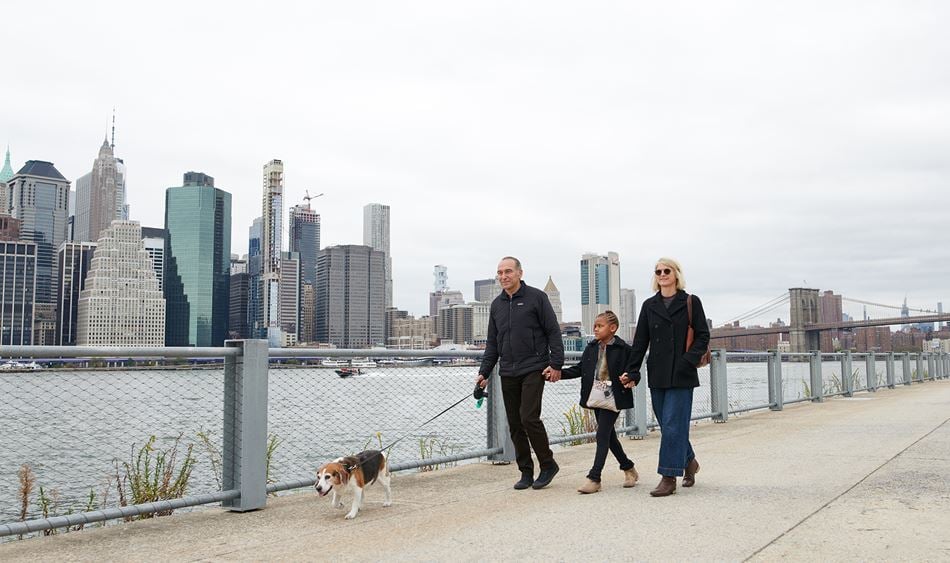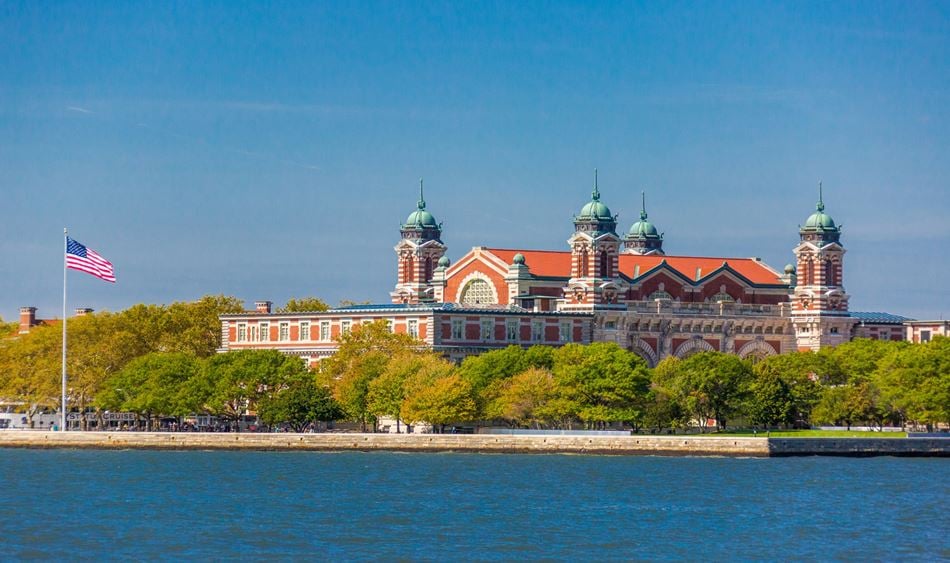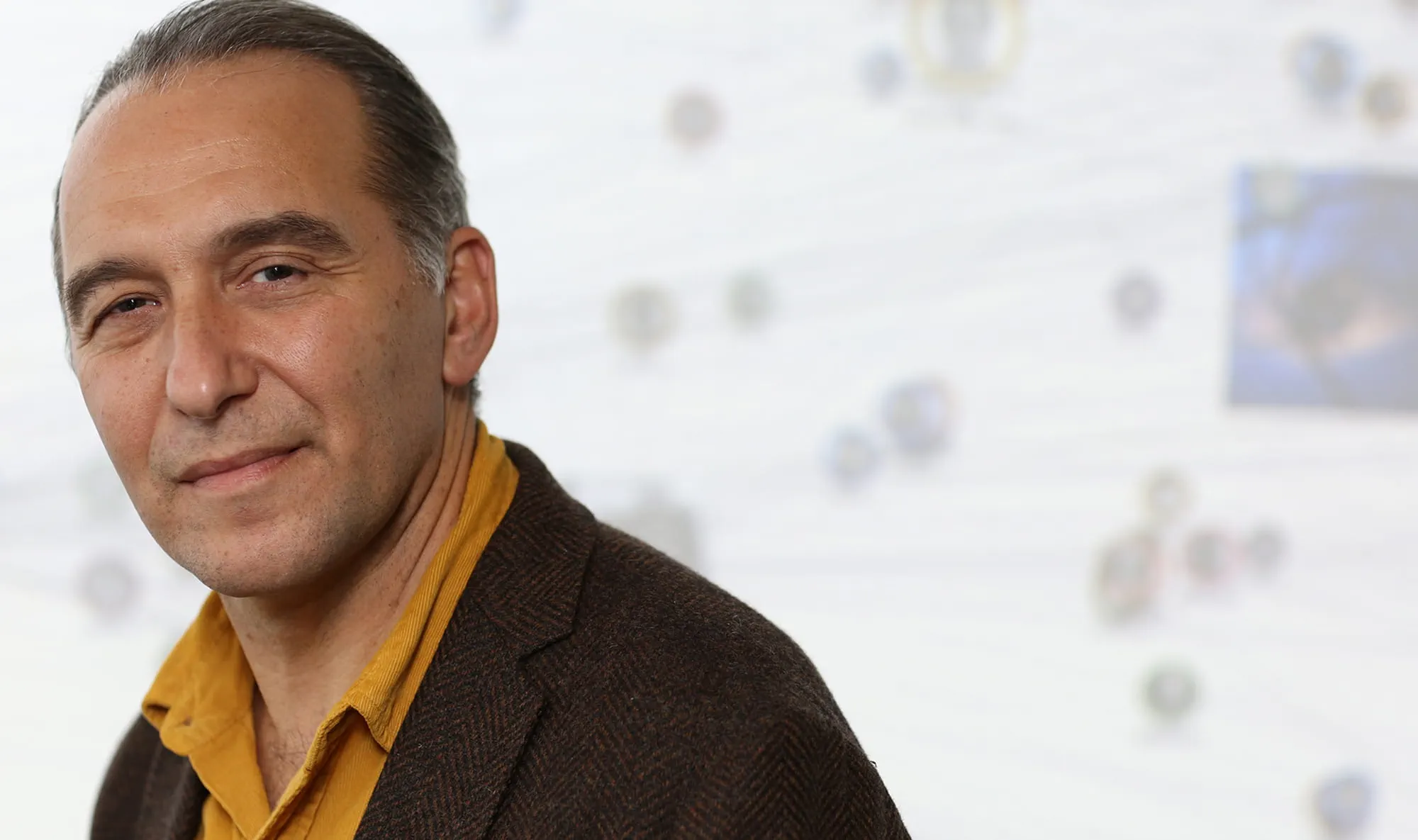Starchitects aside, we hear little about the individuals whose cumulative decisions shape the built environment. In our Profiles in Design series, we chat with engineers, architects, policymakers, and designers about their lives, careers, and daily aspirations.
Arup’s Gideon D’Arcangelo, who joined the firm in 2019 to head up our experience design practice, discusses family, stories, and the responsibility inherent in shaping new technologies.
You grew up in New York. Can you talk a bit about how being a New Yorker has shaped you?
I spent my early years in Manhattan. My dad, Allan D'Arcangelo, was a pop artist, and I grew up watching him paint and listening to him talk about art. His work explored how the American landscape was changing, which is something I think about quite a lot in my work.
My dad loved New York — as do I — because it’s all about pushing the limits, being on the vanguard of things. Like him, I think my life has always been focused less on what’s happening now than what’s happening next.
You started out as a musician, right?
I did, and I’m still a musician. I went to Chicago to study music in college and stayed there for five years. I got my first real exposure to a diversity of music there, and I fell in love with blues and jazz. When I came back to New York, I was working at Hunter College and learned that one of my heroes, the great American ethnomusicologist Alan Lomax, had recently moved to CUNY [City University of New York]. I hit him up for a job.
It was an amazing experience. I was Lomax’s right-hand man on a book he wrote called The Land Where the Blues Began, about his experiences traveling through the South and recording American folk music.
Would you describe Lomax as a big influence?
Working with him set me on my path. Lomax’s whole career was about capturing the voices at risk of being drowned out by the dominant culture. He was quick to adopt new technologies in service of preserving historic traditions, so he was very plugged into Silicon Valley in the early ’90s. I worked with him on a project he did called the Global Jukebox, which was an early interactive database prototype for mapping out the cultural DNA of global folk forms.
This was around the birth of the internet, and Lomax was really pushing the boundaries of computational media design. I found it fascinating because it was a new kind of platform. Instead of just one big broadcast wave, the technology seemed to facilitate a multi-way conversation. It was a democratizing force. I’m still on the board of the Association for Cultural Equity, Lomax’s organization, and we recently brought the Global Jukebox online.
How did those early experiences inform your life and work?
For one, they helped me to see diversity as an important part of modern life — celebrating a multiplicity of voices. That's what's beautiful about experience design — when it’s done well, it can reflect people back to themselves, give them a voice.
Something Lomax always said was if you feel ignored and underrepresented it impacts your self-esteem. My daughter, Bella, is African American. We're a transracial family, and we're very conscious of what that means. New York, for all its wonderful diversity, has some of the most segregated public schools in the country. My wife and I recently moved Bella to a new, more diverse school, because it’s important to us that she sees herself mirrored in her teachers and in other members of the classroom — that she sees herself in the story that’s playing out around her every day.
I think a lot of the work I've done in my life has been about giving people the chance to see themselves as part of a story.

Experience design is still a relatively new field, and I think it can be a little mysterious to people. Can you explain what it is?
Sure. Experience design, as I practice it, is an interdisciplinary field that grew out of exhibit design. It’s the integration of architecture, technology, software, and media content to introduce areas of heightened experience in the built environment. It’s about creating new experiences that exist at the intersection of the digital and physical worlds. The way it has been applied has evolved a lot. Prior to joining Arup, I worked at ESI Design for 24 years. We were at the forefront of experience design and always reinventing the job, which I loved.
I like to think that audiovisual technology and content is a new kind of architectural material. Essentially, my practice involves experimenting with this new material. I gather together specialists in a variety of fields and set a shared design goal that everyone works towards.
The teams I work with can vary in terms of composition, but they typically include storytellers, visual designers, graphics people, AV technologists, software designers, and architects. I strive to be the interdisciplinary translator — the bridge. I think that it’s through this bridging that interesting things start to happen. Sometimes the media content will inspire the physical shape of an installation, or something inherent in the software will inform the visual design. Sparks fly when you get different disciplines to the table early in the creative process.
Technology is becoming more and more ubiquitous in our lives, and the lines between virtual reality and the real world seem to get more permeable every day. Can you talk more about the potential — and the potential hazards — you see?
To me, there's no question that the digital world and the physical world will become more and more integrated until the line between them dissolves. We're just seeing the tip of that iceberg in terms of the power of this medium. It’s exciting because it can open new doors and facilitate connections.
The flip side is that these tools are undeniably powerful, and they can be harmful if they’re mishandled. This is why it’s so important that humanists step in and help design how this medium is being developed and deployed. We need to ensure that these tools are working for people and not the other way around. When I taught at NYU’s Graduate Interactive Telecommunications Program, all my classes focused on the public nature of this work and the responsibility that comes with that — the importance of prioritizing the human experience in modern life.
Can you talk about some of the projects you’ve worked on that you feel have done this?
One of my favorite projects is the immigration database learning center ESI did on Ellis Island. We installed a database with 24 million people who came through Ellis Island between 1892 and 1924, the high immigration years, and created this wonderful center with an interactive experience designed for families to do together. There were three and a half million scans of the original ships’ manifest pages. You could find your relatives and see the original sheet, see who they traveled with, what day they came in, how much money they had in their pocket. People wept when they found their relatives.
I think that's where things are going when we talk about the future — interactive experiences for groups.

You’ve spoken in the past about the importance of storytelling in your work. Can you talk more about that?
We are in the process of introducing a dynamic new medium that can respond to and reflect users into the physical environment. Right now, this new channel is still relatively underutilized. I think to tap this medium’s true potential, we need to figure out how to tell impactful stories. These stories can be simple or complex, but every component of an experience design needs to be shaped by that story and how it invites people in.
One example: at ESI, we did an installation called the Beacon at the PNC Tower in Pittsburgh. This is one of the greenest skyrises in the world, LEED Platinum–rated — a building that may be more like a living organism than any other. I thought of the tower’s sustainable systems as its heart and lungs and brain. But none of its innerworkings were visible to people. We wanted our installation to connect the tower’s occupants to its inner life.
They say when you look into someone's eye you can see their soul. We designed the Beacon to be the tower’s eye — this was the story at the heart of the piece. It’s a 24-foot media installation that interprets data from the building’s advanced green systems and the outside environment, and translates this data into patterns of light, sound, and information. The goal was to give the tower a voice, so occupants understand they are in a different kind of building that requires their stewardship.
What excites you about growing the experience design team here at Arup?
I think that Arup is incredibly well positioned to help shape the way this new dimension is introduced in the built environment. This is a very specialized service that requires real technological depth, which means it’s easy for it to get clunky in the wrong hands. Arup has that technical depth and the holistic approach you need to master the medium, to manipulate it almost like clay. I think we can weave dynamic media into the world in really sublime ways. This won’t be Times Square, where lights are blaring in your face — these will be carefully modulated, even meditative, media experiences that tell stories that reflect and inform their audiences.
 ;
;

